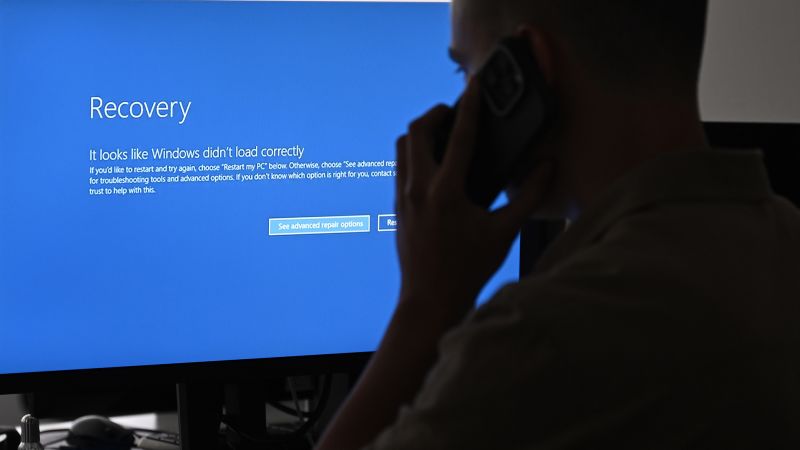Microsoft Retires ‘Blue Screen of Death’ for a New Era

New York – In a move that marks the end of an era for Windows users, Microsoft has announced the retirement of the infamous “blue screen of death.” This notorious feature, which has plagued millions of users for decades, will be replaced with a new black screen, as part of the company’s effort to streamline the user experience during unexpected restarts.
Breaking: Microsoft Announces Major Change
The announcement, made in a recent blog post by Microsoft, detailed plans to introduce the “simplified” black screen later this summer. This update will be rolled out on all Windows 11 devices operating on the 24H2 software version. The company promises that this change will reduce reboot times to “about two seconds for most users.”
Immediate Impact on Windows Users
Variations of the “blue screen of death” have been a part of the Windows operating system since the early 1990s. Originating as the “blue screen of unhappiness” in Windows 3.1, it first appeared when users pressed the control-alt-delete shortcut to exit an unresponsive program. The dialogue for this screen was famously written by former Microsoft CEO Steve Ballmer.
“The actual ‘blue screen of death’ launched in 1993 on Windows NT,” noted Microsoft employee Raymond Chen, “when the system is unrecoverably dead at this point.”
Key Details Emerge
The transition to a black screen is not entirely new. A version of the black screen was already introduced to Windows 11 users in 2021, featuring updated dialogue. This change is part of Microsoft’s ongoing efforts to improve user experience and reduce the frustration associated with system crashes.
Last July, a massive outage caused by CrowdStrike led to widespread instances of the blue screen, affecting millions globally and highlighting the need for a more user-friendly solution.
Industry Response and Expert Analysis
Industry experts have welcomed the change, noting that it reflects a broader trend towards more intuitive and less disruptive computing experiences. The timing is particularly significant as Microsoft continues to evolve its operating systems to meet modern user expectations.
According to sources familiar with Microsoft’s plans, the move represents a significant shift from traditional error messaging towards a more streamlined and efficient approach.
What Comes Next
As Microsoft moves forward with this update, users can expect a smoother experience during unexpected restarts. The company is committed to ongoing improvements and innovations in its operating systems, promising further enhancements in the near future.
This development builds on Microsoft’s history of adapting to user needs and technological advancements. As the tech giant continues to refine its software, the retirement of the “blue screen of death” marks a pivotal moment in the evolution of Windows operating systems.
Meanwhile, industry experts warn that while the new black screen may reduce frustration, users should remain vigilant about system updates and maintenance to prevent crashes.






